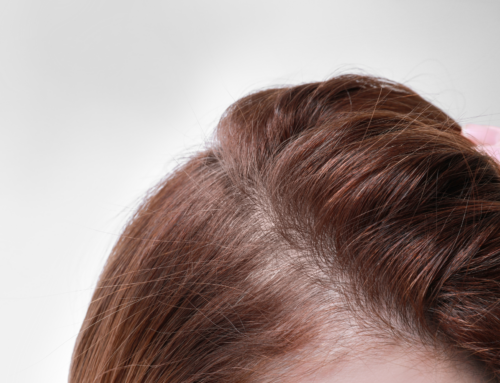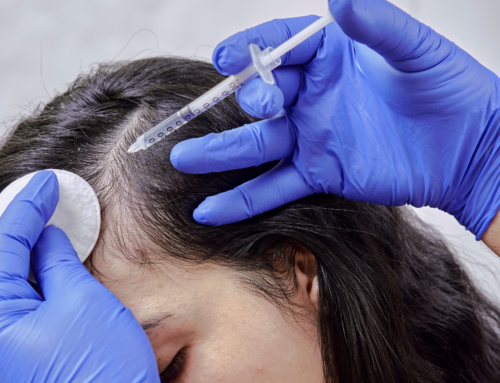If you’re considering a hair transplant, there are a few things you need to seriously consider before scheduling that surgery. As with any cosmetic surgery, there are risks, but when it comes to a hair transplant, there can be complications and long-term side effects that many professionals don’t talk about.
Below are 5 of the main reasons you should pause before heading to the surgeon’s office.
1. Hair Transplant Scarring
Hair transplant scarring is a real concern if you’re experiencing hair loss and considering surgery. In light of the fact that scarring is a result of certain types of transplant surgery, you might need to wear your hair longer in the back to cover the scars. No matter what kind of hair transplant you have, whether it be follicular unit extraction (FUE), or follicular unit transplant (FUT), there will be some scarring.
In FUE, Follicular unit extraction (FUE) hair transplants are done by taking individual hair follicles out of your skin and implanting them elsewhere on your body. This will make the hair in the new area look thicker. The extraction of intact follicular unit is dependent on the principle that the area of attachment of arrector muscle to the follicular unit is the tightest zone. Once this is made loose and separated from the surrounding dermis, the inferior segment can be extracted easily.
FUE is more popular than FUT because it’s less likely to have a “hair plug” look, where sections of skin or hair don’t match the surrounding areas.
The best candidate for a FUE hair transplant is someone with thinning hair or balding who still has enough hair nearby to use for a transplant.
You may not be eligible for a FUE hair transplant if you don’t have enough healthy or thick hair to transplant to the thinning or balding area.
With FUT (follicluar unit transplant), a surgeon cuts a strip of skin from your scalp, usually from the back of your head. The exact size of the strip depends on the number of follicles needed to cover bald spots. Once the individual follicles are removed from the strip, they’re re-inserted into your scalp.
FUT surgery leaves a scar at the site of hair removal. The scar will fade over time but is permanent. The size of the scar depends on how many hair follicles were used during surgery. The scar is generally hidden by your hair, but it may be visible if you keep your hair short. Even if it heals well, you will have a horizontal scar line on the back of the head.
I see many people in my practice who’ve had transplants. Some of them have little scarring and many have a lot of scarring.
Less grafts means less scars, because most people end up having multiple surgeries, and scarring along with fibrosis, is the result.
Picking a great surgeon is key, as the amount of scarring is mostly dependent upon the surgeon’s skill.
- Your Donor Hair is Weak or Thin
If your donor hair is thin and weak, it may best to wait until the hair is stronger. This applies to the donor hair and the hair around the donor area.
If your hair is thin and wispy arond the recipient area, that’s not ideal for a successful surgical outcome. You want the hair to be as strong and healthy as possible, which is why you want to look at things like low level light therapy, nutritional supplementation, and microneedling – like the Cellustrious® Hair Growth Serum to get the hair to maximum health and strength.
Strong hair is crucial for going into surgery, and laying the groundwork by doing pre-treatments before surgery can support the hair.
The bottom line is, some doctors are greedy, and recommend surgery prematurely for financial reasons. These are the doctors who tell people surgery is an option when it really isn’t. If you’re considering a transplant, ask your doctor, “how often do you tell someone they aren’t a candidate for a transplant?” If they say “seldom,” or “never,” then that is the wrong doctor for you.
Surgery should never be the first option. Over time and with help, your hair can grow stronger with the right treatment, but a doctor needs to know when to say “no” to surgery. If they can’t say “no” then it’s likely money is their main concern, not your health or success.
It’s best to get on a preventative treatment to improve the quality of the hair before doing surgery, because the outcome depends on the quality of the donor’s hair.
If the donor hair and the hair around the area is thin and fine, the transplanted hair will be the same.
- It Might Be Too Soon
If you’re being told in your early twenties that surgery is your first option, take a step back.
If you’re a man in your early twenties who is, say a 5-7 on the Hamilton-Norwood (the leading classification system used to measure the extent of male pattern baldness) scale, then you might be good a candidate. This is very rare, and generally occurs in young men who started losing hair around 15 or 16, so they have advanced hair loss at 20. In those cases, waiting might lead to more loss and a transplant could be the best solution.
However, this is rare and it must be considered on a case by case basis.
If you’re in your 20’s and you’re looking at lowering your hairline, or just wanting an incredibly dense head of hair, you’re not a good candidate. However, if you’re losing a large amount of hair and you have strong hair, it could be a good option.
It’s important to note that in most surgical cases, a patient will be on a medical protocol for life, which includes drug therapy. Once a drug has been started, it cannot be stopped, or the hair gained through surgery will fall out. And these medical interventions can have some serious side effects, including low libido and sexual dysfunction.
It’s critical for young men know the commitment they will make for a lifetime, and that there are downsides to these options.
- A Doctor With One Solution
If you are told by a doctor who only offers FUT that you must have FUT surgery, or you’re told by a doctor who only does FUE that you must have FUE surgery, you could be in trouble. You should always get a second opinion, ideally by a board certified surgeon that performs both FUT and FUE surgery.
If a doctor or surgeon isn’t offering you a full range of options, they are not a good fit. The doctor should be comfortable sending you to someone who can help you if they can’t.
Not all of us can do everything well, or at all, so it is in your best interest to have a doctor who will offer a referral for procedures they can’t do. If they aren’t willing to say “no,” or give you other options, you’re not dealing with a professional who wants the best for you. You want someone who’s ethical and honest about his or her limitations. Even if it means losing business.
It’s important to note that FUE has become such a popular procedure that not many surgeons train in FUT anymore. This can be probematic, because some patients are better suited for FUT.
Look for a doctor that can do both, and if not, one that is willing to send you to another professional to get what you need. A doctor with only one solution is not your best bet.
- Avoid Transplants from a Dermatologist or Cosmetic Surgeon
While dermatologists are not generally focused on hair transplants, there are many dermatology offices and medspa centers that use robotic technology for hair transplants.
There aren’t a lot of transplant specialists, but there are a lot of doctors buying hair transplant machines.
In general, you should not get a transplant done with a dermatologist or cosmetic surgeon, especially if they are solely reliant upon robotic technologies. Regardless of the person’s degree, medical profession or status, proper training is imperative.
A transplant isn’t just a surgery, it’s an art form. Some surgeons are great at general surgery but not proficient with hair transplants. There are nuances here and exceptions to the rule, but they are exceptions for a reason. Generally, a facial plastic surgeon is going to be a good fit because they understand the artistry of the face and head.
Find a specialist that is doing transplants 2-3 times a week. Just because someone has a medical license and are a plastic surgeon, they might not be skilled as a transplant surgeon.
Seek out a properly trained surgeon to perform your hair transplants. Ask questions, and find out how and where your surgeon has trained.
There are people for whom a hair transplant is an option, and a good one, at that. But for many, there are less invasive solutions that should be considered. At Cellustrious®, we believe in a different approach that uses no harsh chemicals or surgery, just a holistic approach focused on your well-being.
We explore dietary and lifestyle changes, that empower men to take control of their hair and health. If you’d like to discuss your hair loss, and are looking for a drug-free, surgery free option, you can schedule a free, 15-minute consultation with a certified trichologist, by clicking here.





